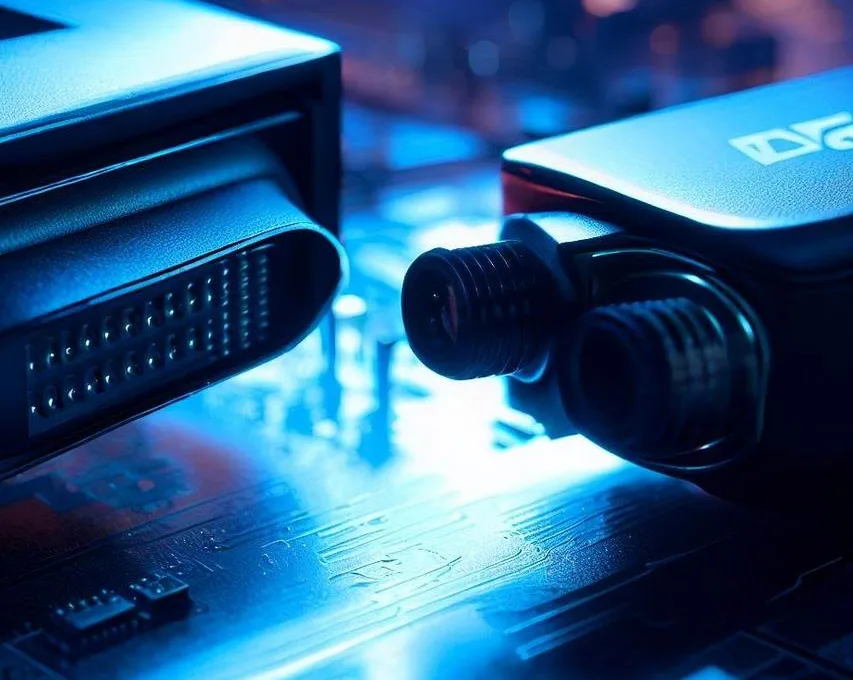Welcome to our comprehensive comparison of DVI (Digital Visual Interface) and VGA (Video Graphics Array) connectors. These two popular video interfaces have been a subject of discussion among tech enthusiasts and professionals alike. In this article, we’ll dive deep into the characteristics, features, and use cases of both DVI and VGA connections.
What is DVI?
DVI, or Digital Visual Interface, is a video display interface that was developed to provide a better and more advanced connection between computers and monitors. DVI supports both analog and digital signals, making it versatile and suitable for various devices.
Types of dvi connectors
DVI comes in several variations:
- DVI-A (Analog): This variant carries only analog signals and is mostly used for connecting to VGA devices.
- DVI-D (Digital): DVI-D cables transmit only digital signals, making them ideal for digital displays.
- DVI-I (Integrated): DVI-I cables support both analog and digital signals, offering compatibility with a wide range of devices.
Dvi-i: a closer look
DVI-I, the integrated version of DVI, is particularly interesting. It combines the benefits of both analog and digital technologies, making it suitable for connecting various displays, including VGA monitors through an adapter.
What is VGA?
VGA, or Video Graphics Array, is one of the oldest video display interfaces. It was widely used during the era of CRT monitors and early LCD displays. VGA is an analog connection that uses a 15-pin connector to transmit video signals.
Dvi vs. vga: the comparison
When comparing DVI and VGA, several factors come into play:
| Factor | DVI | VGA |
|---|---|---|
| Signal Quality | High-quality digital signals. DVI-D offers superior image quality. | Analog signals lead to lower image quality compared to digital connections. |
| Resolution Support | Supports high resolutions, including Full HD and beyond. | Limited resolution support, often up to 1280×1024. |
| Compatibility | Backward compatible with VGA through DVI-I connections. | Standard VGA connectors are not forward compatible with newer interfaces. |
| Usage | Ideal for modern displays and graphics cards. | Legacy connection for older displays and systems. |
Dvi-i: the versatile option
DVI-I stands out as a versatile solution for users who need compatibility with both analog and digital devices. It allows you to connect a wide range of monitors and graphics cards seamlessly.
Why Choose DVI-I?
If you’re in a situation where you need to connect various monitors and devices with different signal types, DVI-I offers a practical solution. It eliminates the need for multiple cables and adapters.
Dvi-i in the wiki
If you’re interested in delving deeper into the technical details of DVI-I, you can explore its comprehensive information on various technology wikis. These wikis provide in-depth explanations and diagrams to help you understand the inner workings of this versatile interface.
Frequently Asked Questions (FAQs)
Q: Can I connect a VGA monitor to a DVI-I port?
A: Yes, you can. DVI-I ports are designed to support both analog (VGA) and digital signals, making them compatible with VGA monitors through an adapter.
Q: Is DVI still relevant in modern systems?
A: While newer interfaces like HDMI and DisplayPort are gaining prominence, DVI is still relevant, especially in scenarios where compatibility with older hardware is required.
Q: Can DVI-I provide higher image quality than DVI-D?
A: No, DVI-I and DVI-D transmit the same digital signals. The difference lies in their support for analog signals, which DVI-I provides in addition to digital signals.
Q: Is VGA completely outdated?
A: While VGA is considered outdated for modern displays and high resolutions, it can still be useful in specific situations, such as connecting to legacy devices.
Conclusion
In the DVI vs. VGA debate, DVI-I emerges as a versatile option that offers compatibility with both analog and digital devices. While VGA has its place in history, DVI’s ability to provide high-quality digital signals and support modern resolutions makes it a preferred choice for contemporary systems.
Podobne tematy




